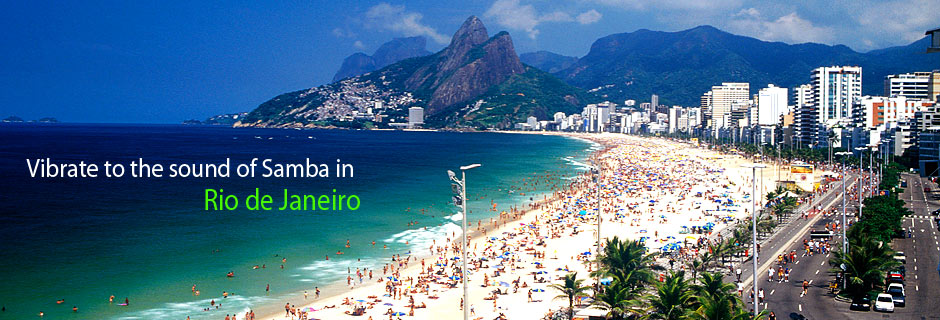
Rio de Janeiro Travel Guide: Rio de Janeiro History
The future site of Rio de Janeiro was surveyed by Portuguese explorer Gaspar de Lemos on January 1, 1502, at Guanabara Bay which was originally thought to have been a river, thus giving the city its name, Rio de Janeiro, or “January River.” The city was eventually founded on March 1, 1565, as fortification against French privateers who trafficked wood and goods from the Brazilian interior. Before the arrival of the Portuguese, the region of Rio de Janeiro had been inhabited by the Tupi, Puri, Botocudo, and Maxakalí indigenous peoples.
Starting at the bay and expanding along the mountains, the city then continued to enlarge its territory by stretching southwards and westwards. Its first main industry was sugar-cane production. African slaves and natives were the principal laborers in this industry, which eventually faded after higher quality sugar cane was found in Northern Brazil. By the late 17th century, Rio de Janeiro’s economy became reliant on the wealth brought by the discovery of gold and diamonds in the neighboring town of Minas Gerais.
In 1808, upon Napoleon’s invasion of Portugal, Rio de Janeiro became the capital of the Portuguese Empire when royalty and nobility fled Lisbon. This made Rio de Janeiro the first and only European capital city to ever be located outside of Europe. It was also during this time that an immense influx of African slaves arrived in Rio de Janeiro with 145,000 slaves being counted in 1819, a population which rose to 220,000 by 1840.
When Brazil was declared independent in 1822, Prince Pedro I decided to keep Rio de Janeiro as the capital of the new country, even after the monarchy was replaced by a republic in 1889. A year before the change to republic, Princess Isabel emancipated the large slave population, which caused a vast migration from the country to the city. This relocation resulted in the formation of the first shantytowns (favelas) in the city.
A military coup brought the country under the republic of first President Marshal Deodoro da Fonseca. Eventually, landlocked Brasilia, which was under construction for a period of 5 years under President Juscelino Kubitschek, replaced Rio as the capital in 1960. Until 1975, Rio was a city-state with the name “State of Guanabara.” It was then that a presidential decree known as “The Fusion” removed Rio’s federative powers and merged it with the state of Rio de Janeiro.
Up until the beginning of the 20th century, the downtown business district of Rio, on the mouth of Guanabara Bay, acted as the border of the city. Afterwards, the city expanded to the south and west, creating the Zona Sul (South Zone), providing access to the touristy neighborhood Copacabana, and building its reputation as a beach party town during the 1930s. Today, Rio de Janeiro ranks second in the nation in industrial production and serves as a major financial, service, and media center to all of Brazil.
Rio Janeiro Pictures | Rio Janeiro Hotels | Brazil Tour Packages
We do have the lowest prices. We will meet or beat any internet published rates from companies outside Brazil
for all package tours. All HOTELS and TOURS are based on US standards. No late booking fees.
We have the best testimonials. Our professional and expert staff is at your service and will reply to any request
within 24 hours. While traveling in Brazil you will have access to our local 24/7 emergency number.

